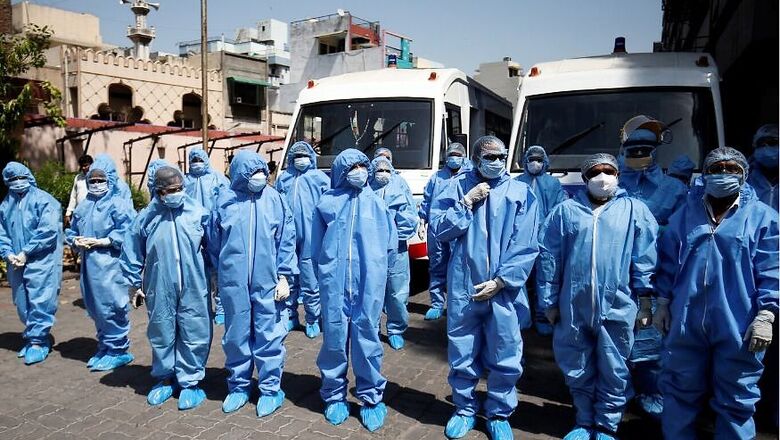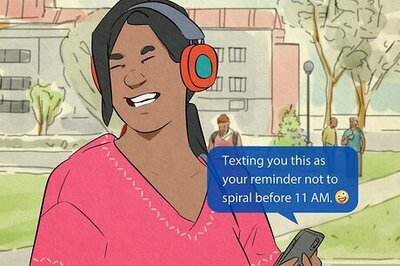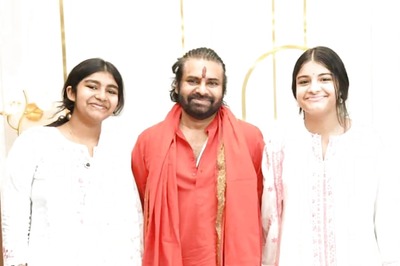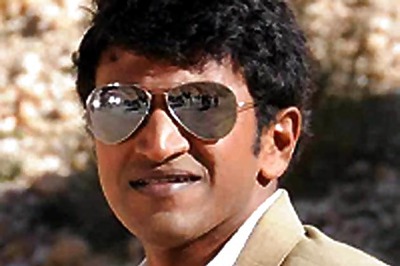
views
On March 16, the White House announced a “worst case scenario” COVID-19 mortality rate between 1.5 million and 2.2 million, but on March 31 this forecast dropped to 1,99,000-2,40,000. Projection models used were not disclosed but this indicated the uncertain situation as the world battles the scourge – death, desperation, shortages of equipment and healthcare aside from a vaccine. President Donald Trump, in yet another bout of foot-in-mouth disease, warned India of retaliation if US drug demands were not met. So much for strategic partnership and ‘after’ he had already spoken to Prime Minister Narendra Modi on the issue.
Many pandemics swept the world before COVID-19. Global chaos is more because cumulative wisdom harvested from battling earlier pandemics was largely ignored and so were warnings. Bill Gates on Ted Talks warned in 2015 that focus remains on nuclear deterrence, ignoring microbes threat that could kill millions.
Anthony Fauci, member of the White House Coronavirus Task Force, warned in 2017 of looming health challenges and “a surprise outbreak” during Trump’s tenure, calling for strengthening global health surveillance systems, public health-cum-health-care infrastructure, transparency, collaboration in research, and universal platform for vaccines. He also warned about mistakes in ignoring global nature of pandemics.
Little wonder that countries are reacting to COVID-19 differently, albeit with China’s ambiguity and opaqueness. In January, Trump’s economic adviser Peter Navarro warned the coronavirus could kill a million Americans, costing about $6 trillion in losses. By late February, Navarro warned up to two million US deaths.
India’s battle with COVID-19 with early initiative was perhaps the best till attendees of the Tablighi Jamaat congregating at Nizamuddiin spread the virus to other parts of the country. Despite the Delhi government prohibiting the assembly of more than 50 people on March 13, which was repeated on March 16, and the Delhi Police imposing Section 144 on March 18 prohibiting the assembly of more than five, a congregation of over a thousand continued at Nizamuddin. Why the thousands-strong Markaz Nizamuddiin was permitted in the first place in the prevailing situation defies logic. The consequences of political dithering has given an exponential rise to COVID-19 casualties.
Mismanagement of migrant labour by some states was bad till the Centre intervened and sorted out the mess. Ironically, some politicians and religious leaders in states like Karnataka, Madhya Pradesh, Uttar Pradesh, Punjab and Maharashtra flouted lockdown and social distancing norms by mingling with hundreds and, in one case, over a thousand -- weddings, religious/political functions, spiritual singing, even birthday celebrations; despite Modi’s call for national unity and strictly observing curfew-like lockdown and social distancing.
Two pandemics hit India over the past decade-and-a-half – bird flu in 2006 and swine flu in 2009. Containing the outbreak of the bird flu (H5N1 virus) that was mainly in Maharashtra, and its mutation to humans entailed culling large number of poultry, testing blood samples of persons in contact with flu-like symptoms, segregating areas, regulating road-rail traffic, tasking pharmaceutical companies to develop anti-flu drug – Tamiflu. Economic impact was large on the poultry industry with prices of non-veg plummeting with public abjuring these.
Swine flu (H1N1), a highly virulent virus, hit India in May 2009 two months after its outbreak in US-Mexico where it began as H2N1 and mutated further. By May 2010, India had 10,193 cases and 1,035 deaths - Tamiflu known as the only drug remedy. H1N1 virus, as in the case of COVID-19, came from abroad. Amidst rising cases, HNVAC (H1N1 Swine Flu Vaccine) was indigenously developed in India by October 2010.
In 2015, swine flu became widespread. Gujarat and Rajasthan were worst hit, especially industrial areas like of Surat. In February 2015, Rajasthan declared it an epidemic and the Health Ministry commenced procuring 60,000 units of Tamiflu and 10,000 N-95 masks. A tender for 10,000 diagnostic kits was floated. 812 deaths were reported in 2015. Swine flu has not left India.
The NDMA in conjunction with the ICMR and National Institute of Virology was deeply involved in battling the above; testing, segregation, treatment, etc and advising the government on organising health care facilities. The NDMA in conjunction with the ICMR prepared two documents for the PMO in addition to a comprehensive SOP based on a mathematical model to prepare and cater for a swine flu like malady in the future.
In an industrial city like Surat with a population of one crore, a virulent virus could seriously affect 20% and mildly affect 80% without necessary measures, requiring hospitalisation. The SOP required training doctors and health staff, preparing quarantine areas, providing polymerase chain reaction (PCR) testing kits, ventilators, masks and the like. Ironically, even DGAFMS could only do the training part. India was short of testing and protective equipment and some measures then and is so now. Media reported on April 3 between 20,000 to 30,000 ventilators are lying unserviceable across the country. This would not be so if the NDMA-prepared SOP was given heed and central monitoring instituted.
The government has pulled out all stops in fighting COVID-19. Every citizen is responsible to abide by the directions and so should states. Doctors and health workers are at the forefront of the battle. Security forces are providing total support and industry and corporate have joined in. This provides opportunity to not only combat COVID-19 but prepare for future pandemics by putting measures in place, in addition to ramping up healthcare which is woefully inadequate in India. There was news of a single Markaz Nizamuddin attendee travelling to Hyderabad and infecting 91 persons who were taken to various quarantine centres in the city. According to Lt Gen (Dr) JR Bharwaj, then member NDMA who prepared the above SOP, this is very wrong; they should have been segregated in situ, tested and treated.
The debate over the extension of lockdown or otherwise is being hotly debated in backdrop of our largely agrarian population, supply-chain, sustenance of poor, unemployment, economic losses; lockdown versus herd immunity, managing hotspots and the like. The government naturally is alive to these issues and will take a decision accordingly. The important thing will be for all states and citizens to abide by the decision.
(The author is an Indian Army veteran. Views are personal.)


















Comments
0 comment